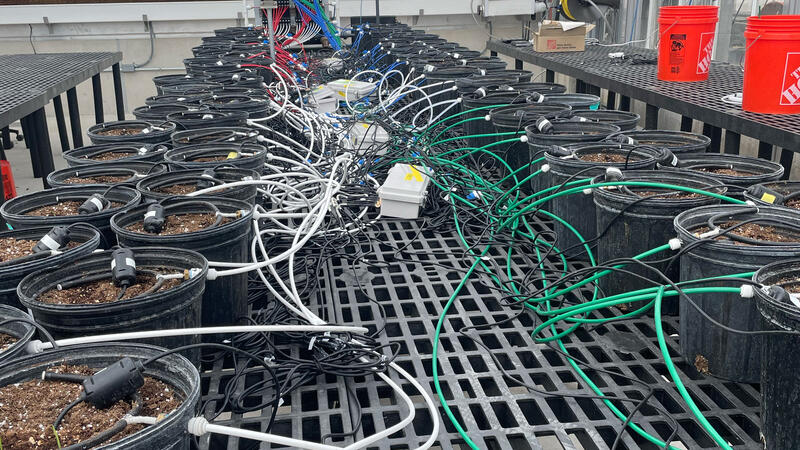News
Sustainable Bioenergy Cropping Systems
Timing is everything: How drought affects switchgrass
Scientists evaluated how switchgrass responded to drought stress at distinct stages of development — vegetative growth, flowering, and when leaves and shoots die off in the fall (senescence) — and the effects on fermentation of plant sugars. The findings suggest that the timing of drought stress has little impact on plant size but does change fermentation rates. Drought during the growing stage can make plants more hardy at the expense of biofuel production, while late-season drought enhances ethanol yields.
Building on previous work evaluating stepwise processing, scientists with the Great Lakes Bioenergy Research Center sought to improve the results with a biorefinery design that combines the first two steps, separating lignin from sugars and breaking into useable pieces with the help of a metal catalyst.
Scientists with the Great Lakes Bioenergy Research Center published 94 peer-reviewed journal articles in the past year. These are some of the most notable discoveries and innovations providing foundational knowledge to enable economically and environmentally sustainable production of biofuels from non-food crops.
University of Wisconsin–Madison scientists have developed a new method for efficiently pinpointing genes that help microbes resist toxic chemicals, which could enable innovations in biotechnology, medicine, and agriculture.
Over millions of years, plants have developed ways to protect themselves. For example, plants produce special chemicals, or metabolites, to combat harmful microbes, especially fungi. But those same metabolites can make it harder for biorefineries to ferment the plant sugars into fuel or other products with yeast, a type of fungus.
A team of researchers including current and former Great Lakes Bioenergy Research Center scientists has been honored for their efforts to engineer soybeans that produce an eco-friendly dye and a brain-boosting compound.
Efforts to produce sustainable fuels and chemicals from non-food plants focus on lignin, a part of the cell wall that binds together sugars and gives plants structure. Lignin contains ring-shaped molecules known as aromatics that some microbes can convert into chemicals used to make plastics and other products. But breaking this complex matrix — or polymer — into smaller, useful units is challenging.
Despite growing interest in Z. mobilis for bioenergy production, scientists have limited understanding of how this treated biomass solution (known as hydrolysate) affects it. So scientists with the Great Lakes Bioenergy Research Center used a systems-level approach to study the microbe’s response to hydrolysate produced from switchgrass treated with a process called ammonia fiber expansion (AFEX). The findings revealed that the hydrolysate triggers a complex stress response, causing changes in the membrane that controls what enters and exits the cell as well as how the microbe digests carbon in the plant sugars.
Three years after joining the Great Lakes Bioenergy Research Center, Michigan State University microbiologist Sarah Lebeis has been tapped to guide the center’s scientific research.
Two WEI researchers explain the connection between gene editing and clean energy in plain-language essays about their work — one with plants, the other with microbes.
GLBRC researchers at Michigan State University are racing to build climate-resilient crops before global food systems reach a breaking point.





